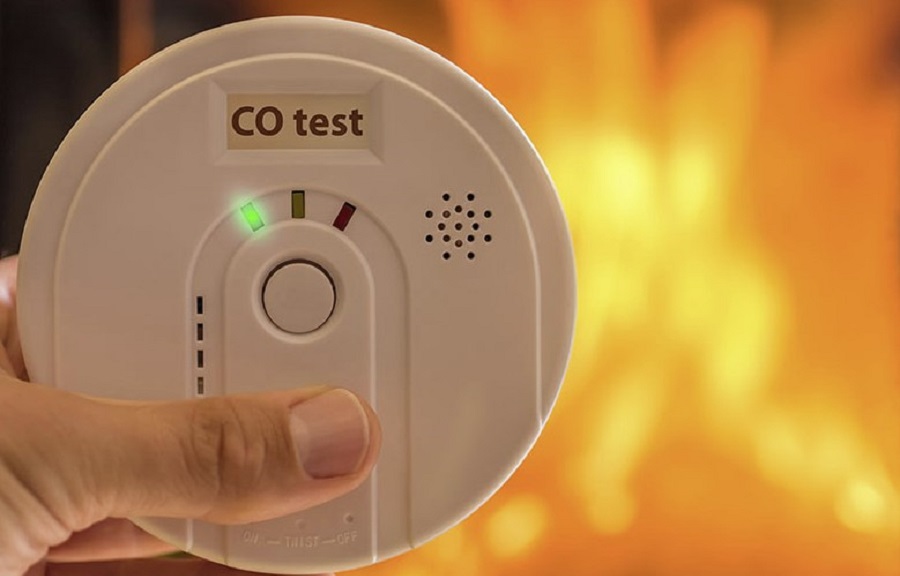Carbon monoxide detectors are essential devices that each home should have. They help keep your loved ones safe by warning them when carbon monoxide levels increase.
CO is the second leading cause of non-medicinal poisoning deaths. Detectors alert you as soon as a problem occurs, even before you start experiencing symptoms of poisoning.

Although having a carbon monoxide detector is indeed beneficial, wrong placement can jeopardize your family’s safety. If you wish to enjoy the maximum benefits of early carbon monoxide detection, you need to find the best position for a CO detector.
This guide teaches you how to install the right number of detectors in your home while ensuring that they are correctly placed.
Carbon monoxide detector placement considerations
Carbon monoxide is lighter than air and distributes evenly in a room. After its emission, the gas reaches the CO detector sooner or later, regardless of the placement. However, if you want the detector to alert you faster, there are some installation rules that you must observe.
So, where should you place a carbon monoxide detector? You should place a carbon monoxide detector in any room that has an open fire or fuel-burning devices like a gas cooker, heater, furnace or fireplace.
Place additional CO detectors in each sleeping area and in rooms where family members spend most of their time. Put one in rooms that have a flue running through them.
If your house is multistoried, install CO detectors on each floor, including the attic and basement. As you do this, do not forget to observe every carbon monoxide detector placement code within your state.
Mounting height and position
The first step towards determining your CO detector’s right position is checking its user manual. Most manufacturers specify the ideal place to install the device.
If your room has an open fire or other fuel-burning appliance, the correct mounting height for a carbon monoxide detector is at least 6 inches from the ceiling and above the window or door.
Do not place the detector right next to the fuel-burning appliance, as this may result in false alarms. Instead, mount it at least 3 feet horizontally from the potential source of carbon monoxide.
Place the carbon monoxide alarm next to the breathing space for rooms that do not have a fuel-burning appliance or open fire. Mount the detector towards the highest side if the room has a sloped ceiling.
Install the detector within 10 feet of any garage that is attached to your home. A running car can easily increase the levels of carbon monoxide in the home, resulting in false alarms.
How many carbon monoxide detectors do you need?
The number of CO detectors you need depends on the size of your home and the number of fuel-burning appliances in use.
Ideally, you should install a detector at each level of your home, in central locations outside the sleeping areas and any other location as required by statutory laws.
Before installing the detectors, ensure that they meet all the testing and safety requirements.
Carbon monoxide safety reminders
Just like any other product, it is important to follow installation and maintenance guidelines to ensure optimum performance of your CO detector. Here are some of the important ones:
- Read the user manual before installation. The manual comes with vital information that can help you identify the best place to fit a carbon monoxide detector.
- Install the CO detectors at least 15 feet from gas-powered burning appliances.
- If possible, connect several detectors so that all alarms sound in case one detects CO.
- Do not install the detector in moist or humid areas, in direct sunlight, or within the reach of children.
- Test the detector once in a while to confirm that it is working. Do this by pressing the alarm button on the device.
- Keep the CO detector free from dirt, dust, and other particles that may prevent it from detecting carbon monoxide.
- Watch out for low-battery alerts, and keep changing the batteries as often as you can.
Are carbon monoxide detectors required in rental properties?
Yes, statutory regulations require installing carbon monoxide detectors in all rental properties and private dwellings. The requisite areas for installation vary from state to state. Most landlords only install detectors if the state law instructs them to do so.
Related Guides
- Best indoor air quality monitors
- X-Sense SC07-W wireless smoke and CO detector review
- Should you use a solar-powered attic fan?
